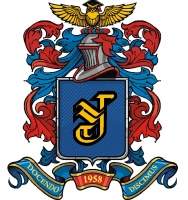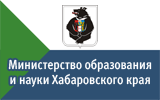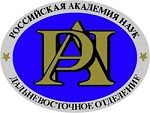Дальневосточный математический журнал
Двумерная реакционно-диффузионная модель характеристик чувства кворума в полном жизненном цикле развития бактерий |
Шуай И., Масловская А.Г., Куттлер К. |
2022, выпуск 2, С. 232-237 DOI: https://doi.org/10.47910/FEMJ202231 |
Аннотация |
| Работа посвящена развитию двумерной реакционно-диффузионной модели процесса коммуникации бактерий посредством чувства кворума, наблюдаемого в течение всех фаз динамики бактериальной популяции. Математическая модель описывается начально-краевой задачей для системы полулинейных дифференциальных уравнений в частных производных, модифицированной с учетом многофазного характера динамики популяции. Модель реализована методом конечных элементов с использованием платформы COMSOL Multiphysics. Результаты моделирования химических субстанций, характеризующих чувство кворума, представлены на примере бактериального вида P. putida при варьировании параметров интенсивности смертности. |
Ключевые слова: реакционно-диффузионная модель чувства кворума, бактериальный рост, конечно-элементное моделирование, моделирование химических соединений |
Полный текст статьи (файл PDF) |
Библиографический список |
| [1] J. D. Dockery, J.P. Keener, “A mathematical model for quorum sensing in Pseudomonas aeruginosa", Bull. Math. Biol., 63, (2001), 1585-1639. [2] J. Muller, C. Kuttler, B. A. Hense , M. Rothballer, A. Hartmann, “Cell-cell communication by quorum sensing and dimension-reduction", J. Math. Biol., 53, (2006), 672-702. [3] G. Telford, D. Wheeler, P. Williams, P. T. Tomkins, P. Appleby, H. Sewell, G. S. Stewart, B. W. Bycroft, D. I. Pritchard., “The Pseudomonas aeruginosa quorum-sensing signal molecule N-(3-oxododecanoyl)-L-homoserine lactone has immunomodulatory activity", Infect Immun., 66(1), (1998), 36-42. [4] A. B. Goryachev, “Understanding bacterial cell-cell communication with computational modeling", Chem. Rev., 111, (2011), 238-250. [5] J. Perez-Velazquez, M. Golgeli, R. Garcia-Contreras, “Mathematical modelling of bacterial quorum sensing: a review", Bull. Math. Biol., 76, (2016), 1585-1639. [6] Ch. Kuttler, “Reaction-diffusion equations and their application on bacterial communication", In: Handbook of Statistics (Chapter 4), 37, (2017), 55-91. [7] Ch. Kuttler, A. Maslovskaya, “Computer simulation of communication in bacterial populations under external impact of signal-degrading enzymes", Proc. of the CEUR “Workshop Proceedings", 2783, (2020), 163-179. [8] Ch. Kuttler, A. Maslovskaya, “Wave effects in stochastic time lagging reaction-diffusion model of quorum-sensing in bacterial populations", Proc. IEEE Int. Conf. Days on Diffraction, 2020, 62-67. [9] Ch. Kuttler, A. Maslovskaya, “Hybrid stochastic fractional-based approach to modeling bacterial quorum sensing", Applied Mathematical Modelling, 93, (2021), 360-375. [10] Ch. Kuttler, A. Maslovskaya, L. Moroz, “Numerical simulation of time-fractional diffusion wave processes applied to communication in bacterial populations", Proc. of the IEEE, “Days on Diffraction", 2021, 114-119. [11] J. M. N. Llorens, A. Tormo, E. Martinez-Garcia, “Stationary phase in gram-negative bacteria", FEMS Microbiol. Rev., 2010, 476-495. [12] M. Peleg, M.G. Corradini, “Microbial growth curves: what the models tell us and what they cannot", Critical Reviews in Food Science and Nutrition, 51(10), (2011), 917(45). [13] Md. S. Munna, Z. Zeba, R. Noor, “Inuence of temperature on the growth of Pseudomonas putida", Stamford Journal of Microbiology, 5(1), (2015), 9-12. [14] N. Shen, M. Jiang, P. Wei, “The kinetic study on the production of hydantoinase and n-carbamoylase by Pseudomonas JS-01", Journal of Nanjing University of Chemical Technology, 23, (2001), 36-39. |






